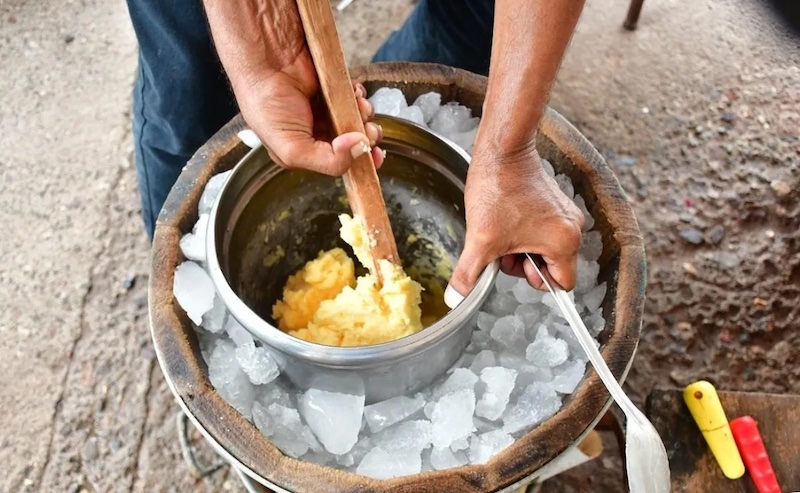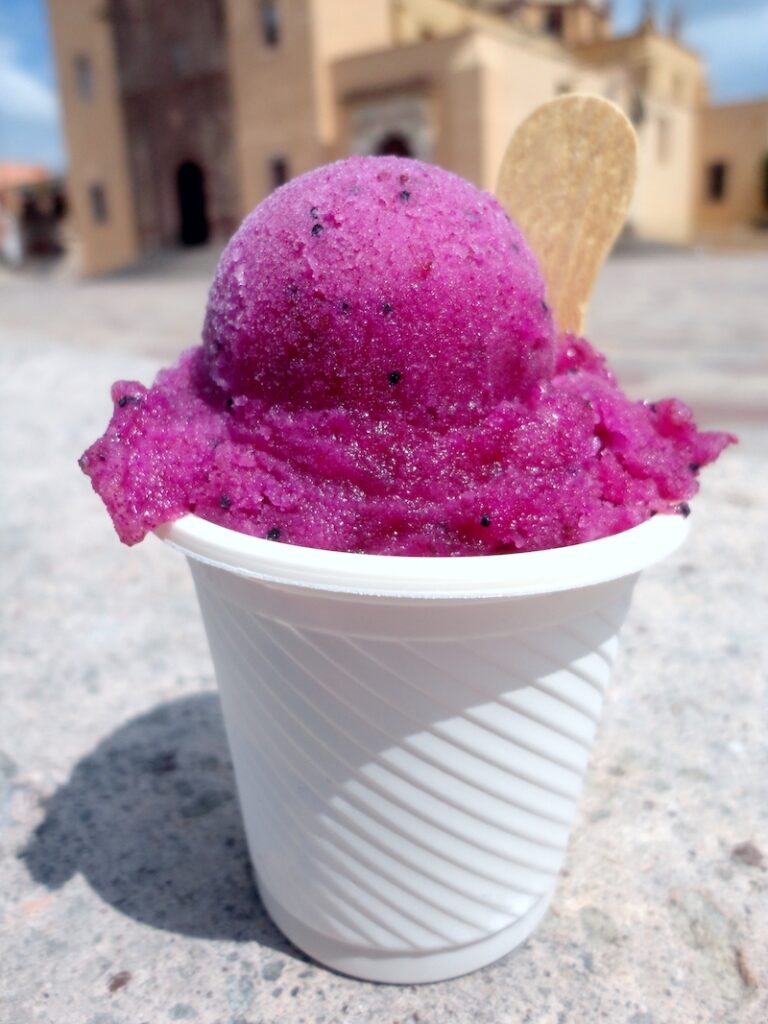Mexican ice cream, sweet tradition
Can you imagine a world without ice cream? Delicious, refreshing and with many flavors to choose from, ice cream is the dessert par excellence in many parts of our planet.
The history of ice cream in the world
The oldest records of something similar to ice cream as we know it today, date between the 7th and 10th centuries during the Tang Dynasty in China. At that time, buffalo, cow or goat milk went through a fermentation process until a kind of yogurt was obtained, then mixed with flour and camphor, and finally refrigerated using ice and salt.
Emperor Tang is said to have had a regiment of 2,271 servicemen, including 94 neveros or ice men.
Although refrigeration processes were known in Europe since the early 16th century, it was not until the middle of the 17th century -—about year 1660— that sorbets appeared in cities such as Naples, Florence, Paris and Spain. Later, in 1664, ice creams made from sweetened milk were tried for the first time in Naples. The rest is history.

Ice cream in México
Far beyond the Atlantic, in central Mexico, the process took a different track. The history of ice cream dates back to the era of the Tlatoani or great ruler, great orator Moctezuma Xocoyotzin (1502-1520), when in order to celebrate their religious ceremonies during the spring equinox to ask for their crops, the Tehotihuacan and Xochimilca cultures had ice brought from the Popocatépetl and Iztaccíhuatl volcanoes. With the ice they prepared a sorbet with honey and regional fruits such as capulines, mamey and cocoa.
The task of collecting the ice took the runners —posted in different spots of the volcanoes—, two days in total parting from Santiago Tulyehualco or place around the tules. To keep the ice intact, they used to wrap it in leather sacks and then covered it with animal hides. Later, during the Colonial period, (1521-1810) the use of milk was introduced to give rise to ice cream.
Centenary dessert
Since then, the tradition of making ice cream has undergone some changes, but it continues to be an artisanal process known as nieve de garrafa or carafe sorbet, named after the steel containers in which it is prepared. The garrafa is placed in a wooden barrel with a wider diameter than the carafe to allow ice and salt to be poured between them. The bowl is constantly moved until the texture is thick like a sorbet.

Today, nieve de garrafa can be enjoyed in all parts of Mexico, but it is particularly in Santiago Tulyehualco, in Xochimilco, Mexico City, that the Feria de la Nieve —held for 136 years now with a great party during Holy Week— fascinates locals and visitors with hundreds of varieties to try from.
Among the most exotic flavors are nopal or catus, garambullo (a juicy fruit from the blue myrtle-cactus), beet, prickly pear, gum, avocado, beer, tequila, mezcal, mole, and rose petals. For the most daring palates, rattlesnake and oyster; but of course the traditional flavors are not to be missed, like redcurrant, walnut, chocolate, vanilla, strawberry, mandarin and mango among many more.

Are you craving for any particular flavor yet?



